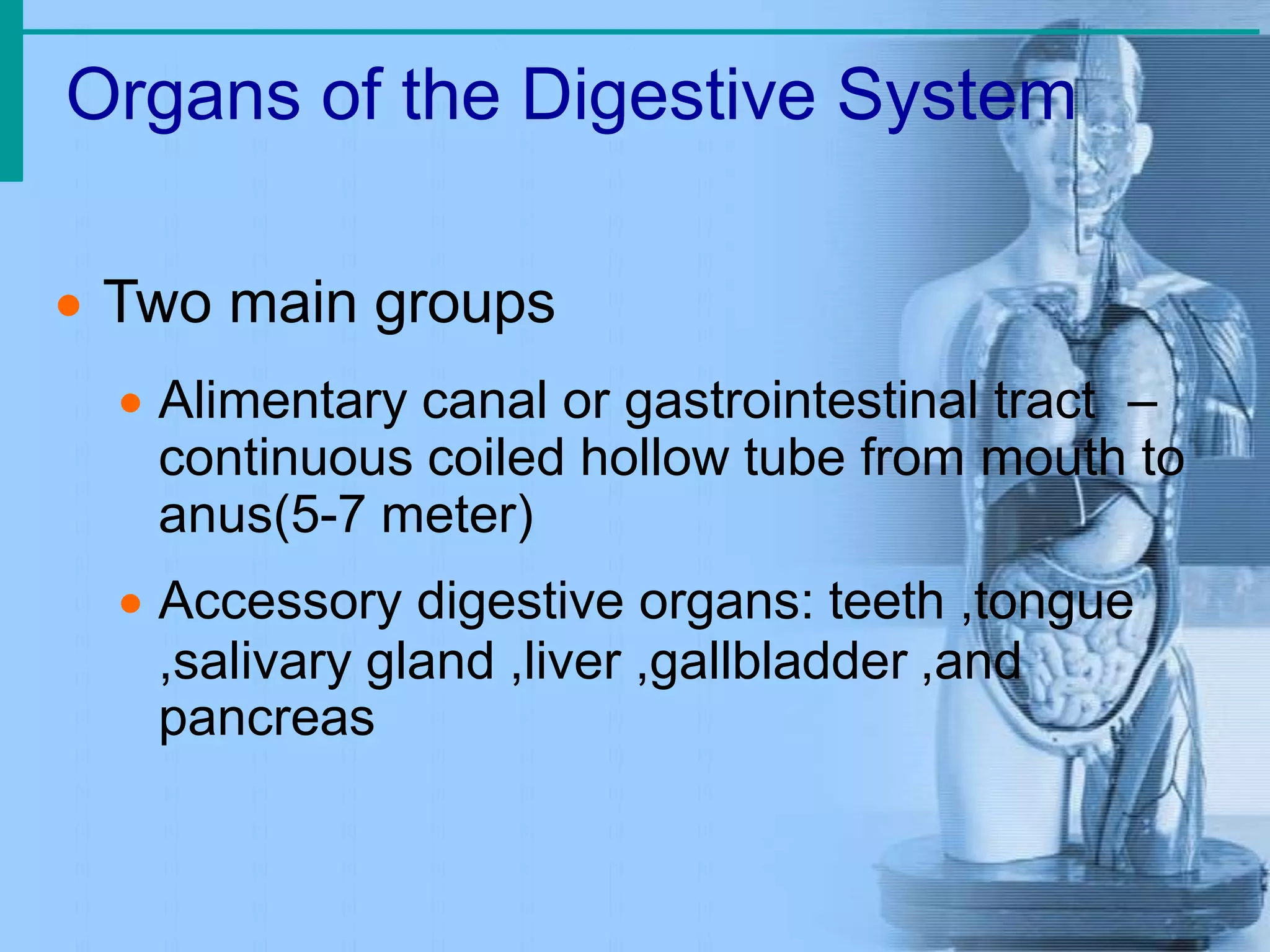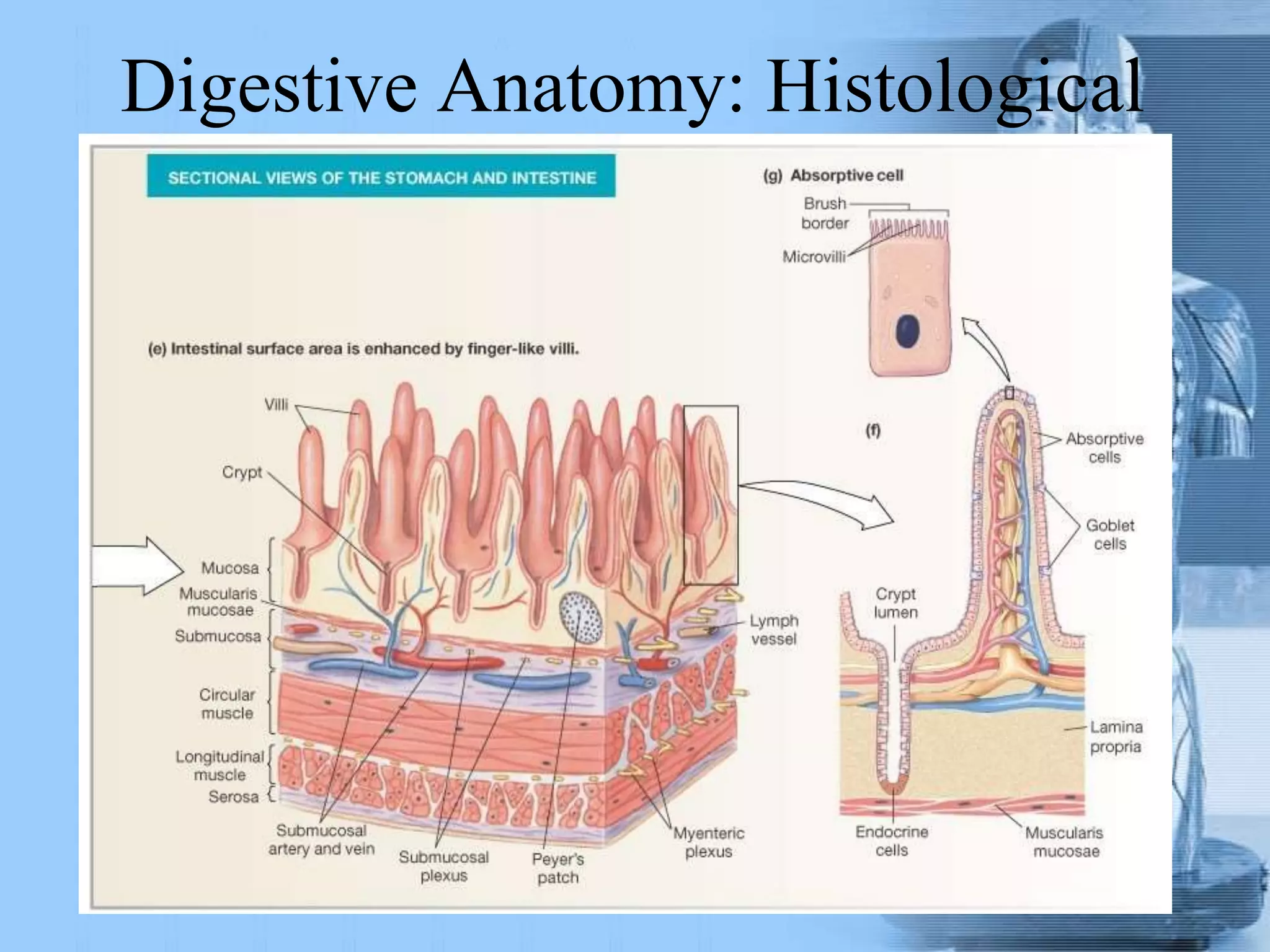The digestive system breaks down ingested food into nutrients that can be absorbed and used by the body. It consists of the alimentary canal and accessory organs. The alimentary canal includes the mouth, esophagus, stomach, and small and large intestines. In the mouth, teeth and tongue break down food and saliva contains enzymes that begin digestion. The stomach stores, churns, and breaks down food further with acid and enzymes. The small intestine completes digestion and absorbs nutrients into the bloodstream through fingerlike villi and microvilli. The large intestine absorbs water before waste is excreted. Accessory organs include the liver, pancreas and gallbladder which produce bile and enzymes to aid digestion
























































































